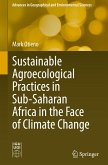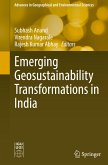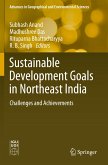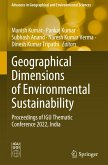This book explores the environmental conditions, particularly the climate and soils, of one of the driest regions on earth, the Central-East of the Sahara. These factors control the ecosystems and determine the land's suitability for use. The area receives only 0.5 mm of precipitation annually and contains one of the largest aquifers in the Sahara, with fossil groundwater. The region's lithology includes Cretaceous formations and crystalline rocks, largely covered by quaternary sediments. Exogenous activities have shaped various landscape types, such as ergs with different dunes, deflated depressions with playas, and yardangs.
Soils in the region are primarily formed through physical processes and are often shallow, sandy, and enriched with soluble salts. The book provides a detailed analysis of their physical and chemical properties, genesis, and relation to environmental factors and sociological aspects. It also discusses rare ecosystems, including those dependent onfood imports and those that arise episodically and last for a few years.
Considering all ecological parameters, a land assessment system for irrigated agriculture is developed, along with descriptions of suitable cultivation methods and optimal irrigation systems. The book's contents are based on data from several expeditions and laboratory work funded by the German Research Foundation.
Soils in the region are primarily formed through physical processes and are often shallow, sandy, and enriched with soluble salts. The book provides a detailed analysis of their physical and chemical properties, genesis, and relation to environmental factors and sociological aspects. It also discusses rare ecosystems, including those dependent onfood imports and those that arise episodically and last for a few years.
Considering all ecological parameters, a land assessment system for irrigated agriculture is developed, along with descriptions of suitable cultivation methods and optimal irrigation systems. The book's contents are based on data from several expeditions and laboratory work funded by the German Research Foundation.








